|
The Hellenic Genocide
Quotes from historical documents and related Photos. |
|||
CHAPTER III: "... It is imperative for political reasons that the Greeks dwelling along the coast of Asia Minor be compelled to evacuate their villages in order to settle in the vilayets of Erzerum and Chaldea. If they refuse to emigrate to the places assigned to them, you should issue verbal instructions to our Mussulman brothers so that there may by all kinds of excesses, compel the Greeks to, leave their homes of their own accord. Do not in this case forget to obtain from these emigrants declarations to the effect that they are leaving their hearths and homes of their own free will so that no political complications may later result there from.--- (Signed by The Chief of the Turkish Bureau of Correspondence, Ali Riza; from Le Temps, Paris, July 20, 1916; and "Persecution of the Greeks in Turkey," by Brown and Ion, Amer. Hellen. Soc. Publ. No. 3, 1918.)" CHAPTER III: "Many officers and soldiers of the Turkish army who have been captured by the Allies and have arrived at Salonica, upon being questioned, have told of the destruction of Hellenism in Turkey.... Three means have been used, general mobilization, requisitions, and deportations. Up to the end of 1917 more than 200,000 Greeks between 15 and 48 years of age were mobilized. Large numbers of these have succumbed to maltreatment, famine, exposure, and epidemics. The Hellenic populations that have been compelled to leave their homes in Thrace and Asia Minor number more than 1,500,000. With the exception of the Greek populations of Constantinople, Smyrna, and some other cities, all the Greeks of Turkey are suffering martyrdom through deportations, outrages on women, and starvation. Half of the deported populations have perished in consequence of ill-treatment, disease, and famine. Many have committed suicide or have been massacred in the interior of Asia Minor. Those that remain are subjected to continual martyrdom as slaves or are forced to become Mohammedans. Turkish functionaries and officers declare that no Christian shall be left alive in Turkey unless he embraces Mohammedanism. . . ." CHAPTER III: "After the so-called Young Turks, who dethroned Abdul Hamid, had imagined a theory of Pan-Turkism, imitated from the Pan-Germanism of the Kaiser, they decided to extirpate or enslave or deport all the Christian races of Turkey. The Turks decided to begin with the Armenians. The plan was elaborated by the Turkish Cabinet under Talaat, Enver, and Djavid. It is known to have had the approval of Germany." CHAPTER VII: "This year saw the terrible Armenian and Hellenic massacres and deportations in Turkey and the similar massacres in Serbia by Austrians and Bulgars, with complete destruction of the country. It also saw the campaign of extermination by the Germans in Poland by famine and deportation. The dead among the civilian populations during this year surpassed the number of those killed in battle on all the fronts, and is estimated at over three million, including almost all the children and a large part of the women." CHAPTER VIII: "Since the downfall of King Constantine in June, 1917, Greece has been a faithful member of the Allies. In the peace settlement she laid claim to parts of Greek Macedonia and northern Eperus, to Thrace and Constantinople and to the rich Greek section of the coast of Asia Minor, including Smyrna, where there are over a million Greeks, together with several islands (the Dodecanese, occupied by Italy). In fact she wished to add about two and a half million Greeks to her population." CHAPTER VIII: "The Turks themselves live mostly in the interior of Asia Minor and in Constantinople. They, the Arabs, Kurds, and the majority of Syrians, are Mohammedans. The Armenians, Greeks, and some Syrians are Christians. The Turks do not engage in any business or other productive occupations and do practically nothing but mis-administer and live off the industrious part of the populations (Armenians, Greeks, Jews, Syrians). The so-called constitution of 1876 is a dead-letter: the government is a tyranny by a small clique of Turks, who have tried since 1909 to establish a Pan-Turkish or Pan-Turanian despotism over all the elements, even the Arabs. The Allies have pledged themselves to the expulsion of the Turks and to the freeing of all the races they have oppressed." CHAPTER VIII: "There are perhaps 2 1/2 million Greeks, mostly in Constantinople and European Turkey and along the sea-coast of Asia Minor, where in ancient times there were splendid Greek cities rivalling Athens and Sparta. The Armenians before the massacres formed the bulk of the population to the north, in what the Turks call Kurdistan, but we call Turkish Armenia. Mingled with them, in southern Armenia, are the Kurds and the Turks. In all sections of the empire there were about 2,000,000 Armenians. Of the Kurds there are close on two millions. Syria, including Palestine, has about 3,000,000, of whom practically none are Turks and the bulk of Semitic race, either Arabs, Syrians, or Jews." The Hellenic Genocide Quotes from historical documents and related Photos. Previous page | Initial page | Site Map | Next page (12th of 29) |
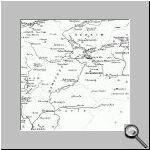
Marash to Mardin.
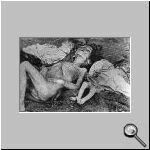
Armenians massacred by the Turks.
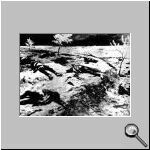
Hellenes massacred by the Turks.
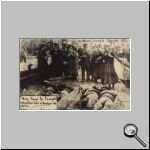
Hellenic families crying for their relatives.
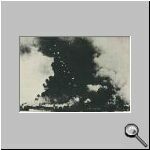
Smyrna, taken by the fire.
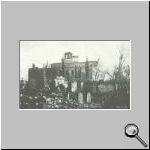
The Hellenic Hospital in Smyrna. Burnt.
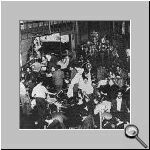
Looting, destruction and celebration.
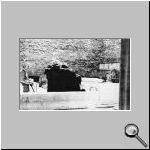
Hellenes watching destroyed graves.
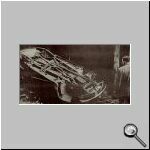
One of the many cars of Hellenes destroyed by the Turkish mobs.
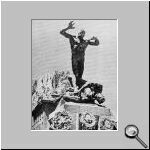
The Turkish monument for the extermination of their enemies.